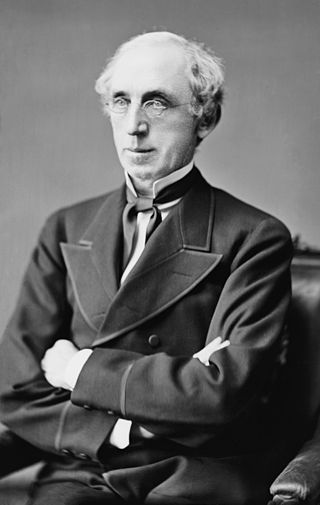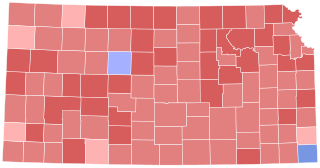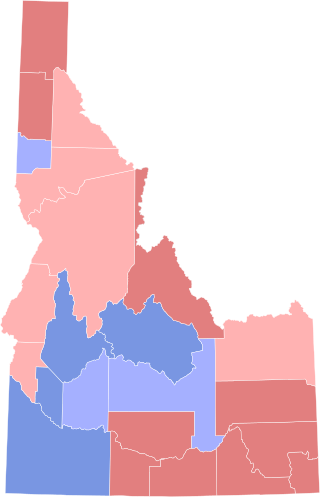
Henry B. Payne was an American politician from Ohio. Moving to Ohio from his native New York in 1833, he quickly established himself in law and business while becoming a local leader in Democratic politics. After serving in the Ohio Senate, Payne was elected to a single term in the United States House of Representatives in 1874. In the House, he worked unsuccessfully for a compromise in the debate over whether all of the nation's currency should be backed by gold. He was defeated for reelection, but served on the Electoral Commission that convened in early 1877 to resolve the dispute over the results of the 1876 presidential election.

The 2010 congressional elections in Virginia were held November 2, 2010, to determine who will represent the state of Virginia in the United States House of Representatives. Representatives are elected for two-year terms; those elected served in the 112th Congress from January 2011 until January 2013.

The 1884–85 United States Senate elections were held on various dates in various states, coinciding with the presidential election of 1884. As these U.S. Senate elections were prior to the ratification of the Seventeenth Amendment in 1913, senators were chosen by state legislatures. Senators were elected over a wide range of time throughout 1884 and 1885, and a seat may have been filled months late or remained vacant due to legislative deadlock. In these elections, terms were up for the senators in Class 3.

The 2010 United States House of Representatives elections in New Jersey were held on November 4, 2010, to elect the 13 U.S. representatives from the state of New Jersey, one from each of the state's 13 congressional districts. The primary election in which candidates were chosen took place on June 8, 2010.

The 1970 Michigan gubernatorial election was held on November 3, 1970. Republican William Milliken won the election, defeating Democratic nominee Sander Levin.

In the Chicago mayoral election of 1897, Democratic nominee Carter Harrison Jr. was elected, winning a majority of the vote and defeating independent Republican John Maynard Harlan, Republican nominee Nathaniel C. Sears, independent Democrat Washington Hesing, as well as several minor candidates. Harrison carried a 26.7 point lead over second-place finisher Harlan, a margin greater than Harlan's vote share itself.

The 1966 Kansas gubernatorial election was held on November 8, 1966. The election pitted Democratic Robert Docking against incumbent Republican William H. Avery. On the campaign trail, Docking attacked Avery for his administration's unpopular income and sales tax hikes. Avery was also hurt by a contentious court ordered school district unification process that took place during his term. Avery had trailed in polling before the election, but was still seen as the favorite due to Kansas's strong Republican tradition and the intense unpopularity of the Johnson Administration in the state. Despite this, Docking defeated governor Avery 55%-44%

The 1964 Kansas gubernatorial election was held on November 3, 1964. Republican nominee William H. Avery defeated Democratic nominee Harry G. Wiles with 50.9% of the vote.

The 1940 Rhode Island gubernatorial election was held on November 5, 1940. Democratic nominee J. Howard McGrath defeated incumbent Republican William Henry Vanderbilt III with 55.84% of the vote.

The 1942 Kansas gubernatorial election was held on November 3, 1942. Republican nominee Andrew Frank Schoeppel defeated Democratic nominee William H. Burke with 56.68% of the vote.

The 1938 Kansas gubernatorial election was held on November 8, 1938. Republican nominee Payne Ratner defeated Democratic incumbent Walter A. Huxman with 52.10% of the vote.

The 1940 Utah gubernatorial election was held on November 5, 1940. Democratic nominee Herbert B. Maw defeated Republican nominee Don B. Colton with 52.07% of the vote.

The 1887 Kentucky gubernatorial election was held on August 1, 1887. Democratic nominee Simon Bolivar Buckner defeated Republican nominee William O'Connell Bradley with 50.70% of the vote.

The 1886 Colorado gubernatorial election was held on November 2, 1886. Democratic nominee Alva Adams defeated Republican nominee William H. Meyer with 49.66% of the vote.

The 1910 Kansas gubernatorial election was held on November 8, 1910. Incumbent Republican Walter R. Stubbs defeated Democratic nominee George H. Hodges with 49.76% of the vote.

The 1914 New Hampshire gubernatorial election was held on November 3, 1914. Republican nominee Rolland H. Spaulding defeated Democratic nominee Albert W. Noone with 55.18% of the vote.

The 1878 Colorado gubernatorial election was held on October 1, 1878. Republican nominee Frederick Walker Pitkin defeated Democratic nominee William A. H. Loveland with 49.98% of the vote.

The 1907 Rhode Island gubernatorial election was held on November 5, 1907. Incumbent Democrat James H. Higgins defeated Republican nominee Frederick H. Jackson with 50.37% of the vote.

The 1904 Rhode Island gubernatorial election was held on November 8, 1904. Republican nominee George H. Utter defeated Democratic incumbent Lucius F. C. Garvin with 48.94% of the vote.

The 1908 Idaho gubernatorial election was held on November 3, 1908. Republican nominee James H. Brady defeated Democratic nominee Moses Alexander with 49.61% of the vote.























